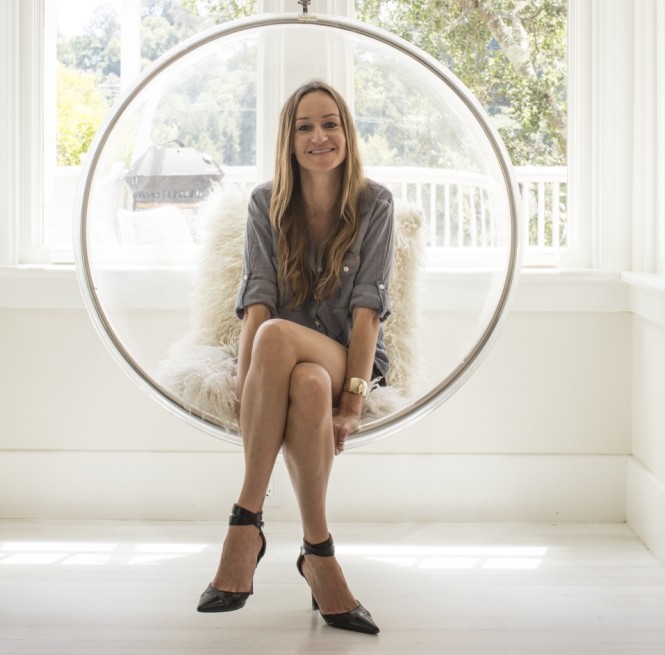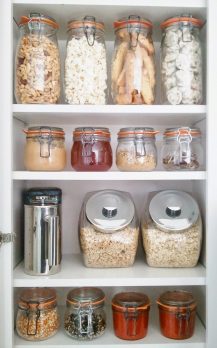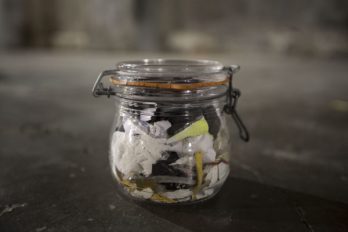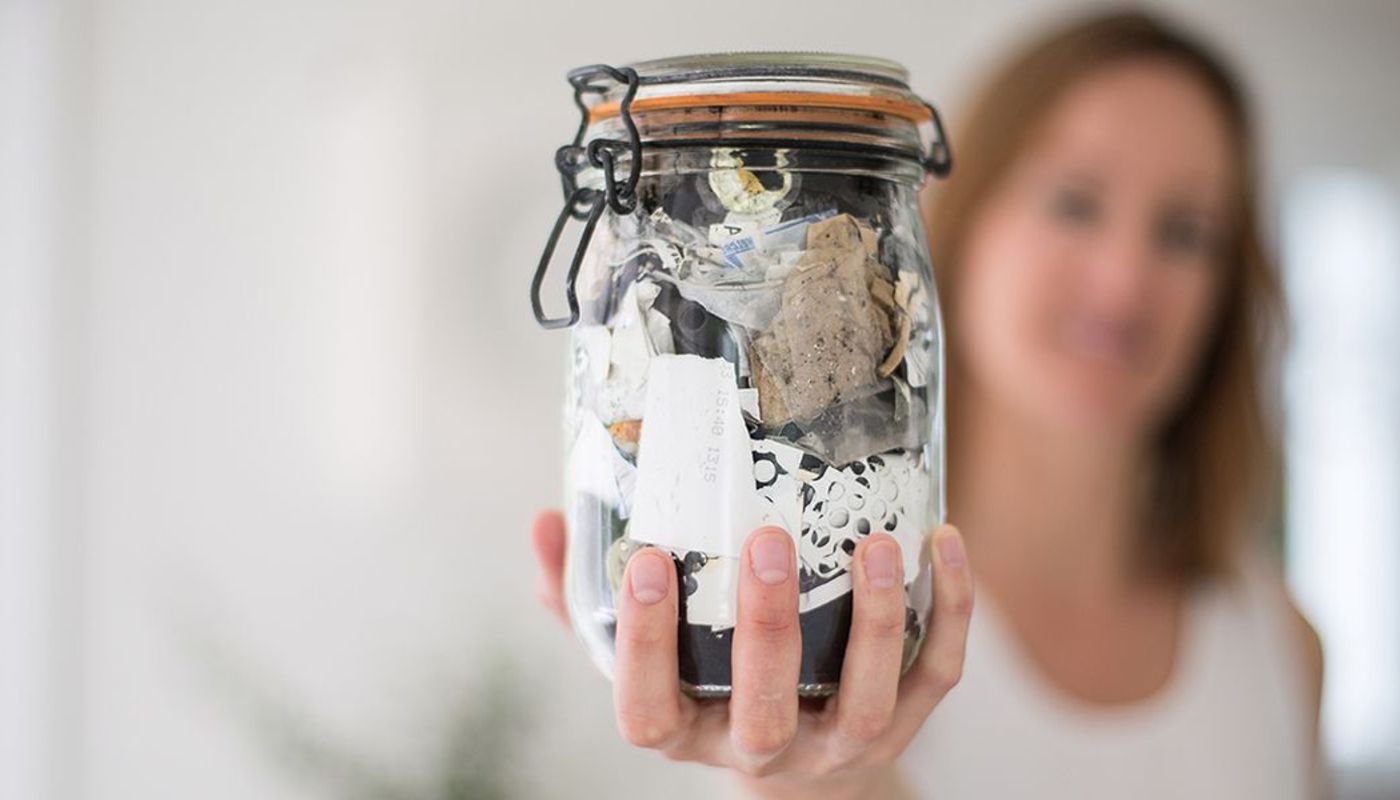Bea Johnson is the founder and the leading spokesperson of the zero waste lifestyle movement. She has been living zero waste for ten years, along with her husband and two kids. She was kind enough to talk with me while she was touring Europe and giving talks about the movement.

You were the first person to go zero waste. Can you talk about the process?
In 2006, we were living in a house outside of San Francisco. Since it were remote we had to get into a car to do anything; to go to the grocery store, the school, restaurants and movie theatres. We wanted to be closer to these things so we decided to relocate. Before finding the right house in downtown that had all these things within walking or biking distance, we rented an apartment for one year and we only moved in with the necessities.
During that year we found that when you live with less, you have more time in your hands to do the things that you enjoy doing. You have more time for family, for friends, for picnics and for hikes. So when we did find the right house in downtown that interested us, we got everything out of the garage and we found that 80 percent of the belongings that we’d put in there we hadn’t even missed once in that whole year. So we let go of them.
To me the biggest advantage of this lifestyle is the simple life. By definition voluntary simplicity is not there to complicate your life but to make room in your life for what matters most to you. Thanks to voluntary simplicity we had time in our hands to educate ourselves on environmental issues. We read some books and watched some documentaries on environmental issues. My husband and I were very sad about the future we were going to leave behind. That’s what gave us the motivation to change our ways.
First we watched our energy consumption and water consumption. Then I turned to my focus on waste. Back then the term zero waste was used to describe manufacturing or waste management practices at a city level, but when I saw that term it lit a light bulb in my head. I knew that was what we should be doing. That goal helped us push things further. Because there was no guide on how to live zero waste, I had to test a lot of things. I even tested the extremes. I tried moss as toilet paper. I tried baking soda on my hair for six months instead of shampoo. At one point I was making my own bread, my own cheese, my own butter, my own soy milk. Then we found we had gone too far and we let go of the extremes.
How do you define the zero waste lifestyle now?
The zero waste lifestyle aims at reducing as much trash as possible from your life. What you then have is a life based on experiences instead of things; a life based on being instead of having.
5R’s

My methodology of the 5 Rs is to refuse the things that you do not need, reduce the things that you do actually need, reuse by swapping anything that is disposable for a reusable alternative and buy second hand if you need to by something. Then it is recycling but recycling only what you cannot refuse, reduce, or reuse. Finally it is rot, which is composting the rest. So the first thing you can do is to refuse what you do not need.
Today in this consumerist society we are the targets of many promotional goods, but every time we accept them we are creating a demand for more. Every time we accept a plastic bag it is a way for us to say “I love plastic bags and I dream of a world filled with plastic bags for my children”. And more oil will be drilled from the ground to create replacements. So it is important to learn to say no to these things to stop the demand. Once you do you will be amazed how much stuff you can stop from coming in.
Health benefits of zero waste
We found that the zero waste lifestyle is not just good for the environment. It is also good for our health because we have been able to eliminate all toxic products from our lives. We no longer clean with regular toxic cleaning products, just clean with white vinegar and water. On my skin I only use food items. For example I use chocolate powder as blush. We also found that it saves us a huge amount of money.
Financial benefits of zero waste
When I got started my husband was worried. We were in the midst of a recession and he saw me go to organic food stores to buy our food and he saw me buy reusables and he questioned if we would be able to afford to do this. I encouraged him to compare our bank statements from before and after the zero waste lifestyle. That is when we found that we were saving 40 percent on our overall spending!
This is due to the fact that we consumed way less than before. Today we are happy with the number of things we have in our home. We are no longer adding to it. If we buy something it is only to replace something that needs to be replaced. And when we buy that replacement we buy it second hand, which obviously costs less. We also buy our food in bulk. When you buy something packaged, 15 percent of the price covers the packaging. So when you buy in bulk you make an automatic 15 percent saving.
Finally we replaced anything that was disposable with a reusable alternative. That means that our money is no longer invested in the landfill or thrown away. Because if you buy something that is single use it is buying it, using it and throwing it away. It is literally throwing your money away. So we stopped all that. This is how we were able to save 40 percent. These savings have even allowed us to install solar panels on our roofs and a great water system, which reuses the water from the showers and the washing machines to irrigate our land.
How did your children adjust to this lifestyle?

If you think about it, zero waste is about what you do outside the house than what you do inside the house. It is the person that consumes for the household that has the power to either choose not to consume or consume differently. Since I was the one making those decisions, zero waste went completely unnoticed by my children.
We took a field trip with his class to the health food store and in front of the bulk bins the teacher asked “Why is it good to buy in bulk?” and my son just sat there and didn’t say anything. I wanted to say “Say something, you know the answer to this”. And it just dawned on me on my way home that I had eliminated the waste from our house because I am the one who consumes. It was up to me to do this. And the things I had done had gone completely unnoticed because I had purchased things my kids were really happy with.
That day when we got home, I opened the pantry and I asked my son “Do you notice anything different with our pantry compared with your friends’ pantries?” and he said no. I told him that we had no packaging and he said “So what?”. He did not care because we had found a system that worked for us. They are not eating Cheerios for cereal but they have found a cereal that we buy in bulk that they like just as much.
I noticed that this movement is dominated by women. Why do you think that is? What drives people to go zero waste?
Traditionally, and I underline traditionally, it is the women that take care of the household. They usually go grocery shopping, take care of the cleaning and maintain their house. So the people that are most interested in this are women because they want to simplify their tasks to make their lives easier and they find that the zero waste lifestyle simplifies all that. That’s why they’re drawn to it.
The bracket that is most interested in this movement is the “25 to 34” age group. I think this is because it’s the age where people become independent. Women also become pregnant in this time and when you are pregnant you’re more careful about what you put in your body and the things that surround you because you want the best for your child.
Some people are drawn to it for health reasons. They look at the causes of cancer and they will find that they are the things that surround us, the products we use, or the things we eat. When they look for solutions they find that the zero waste lifestyle has all the solutions they’re looking for.
Other people can be interested in this movement for financial reasons. In my family that was my husband. My husband is a numbers guy and once he saw that we were saving 40 percent he was totally on board.
People are also interested in this movement for the way we’ve presented it. We’ve shattered misconceptions by showing that you can still live a modern lifestyle. Once we showed how we lived people said “Wow if that’s what the zero waste lifestyle looks like, I want to live zero waste too”.
Many countries are now banning single use bags. What other regulations could be implemented to reduce our plastic waste?
Those bans are a great start. Often they’ve come because waste management companies are no longer able to deal with it. In landfills those plastic bags fly all over the place and then very often they end up in nature and the oceans.
There are lots of things we can do on a political level to reduce waste. Politicians have a responsibility to support a circular economy where an item does not ever need to be thrown away but is produced better to be reusable or repairable.
And finally, could you recommend any additional resources?
Some of the books that opened my mind are Slow Death by Rubber Duck which talks about all the toxic things that surround us and the effect they can have on our health, Cradle to Cradle and In Defence of Food.
Documentaries I would recommend are The True Cost (available on Netflix) which is about the fast fashion industry and Home.
And finally Wall-E is a great kid-friendly movie about what kind of future lies ahead if we don’t change our ways.
You can also by get Bea Johnson’s bestselling book “Zero Waste Home” or read her blog with the same name.



 Arabic
Arabic Chinese (Simplified)
Chinese (Simplified) Dutch
Dutch English
English French
French German
German Italian
Italian Japanese
Japanese Portuguese
Portuguese Russian
Russian Spanish
Spanish Turkish
Turkish